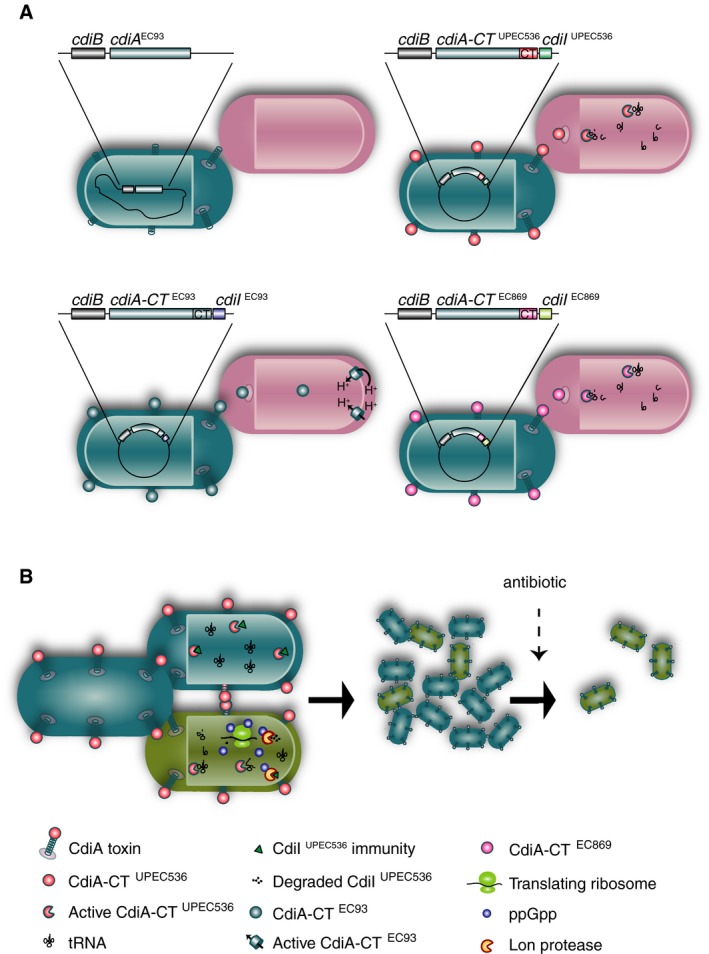Figure EV1. Overview of the plasmid and chromosomally encoded contact‐dependent growth inhibition systems.

- The cdiBA locus from EC93‐expressing CdiB and the N‐terminal part of CdiA, but no CT or immunity from the native EC93 cdiBAI promoter was used as for all constructs. The constructs were modified to contain the C‐terminal toxins and cognate immunity genes from EC93 (CdiA‐CT‐IEC93), UPEC 536 (CdiA‐CT‐IUPEC536) or EC869 (CdiA‐CT‐IEC869). These constructs were either inserted on the MG1655 chromosome as indicated for the CdiBAEC93 (upper left), or on the medium‐copy pWEB vector as indicated for the CdiA‐CT‐IEC93 (lower left), CdiA‐CT‐IUPEC 536 (upper right) or CdiBA‐CT‐IEC869 (lower right). Cells with these systems (turquoise) deliver C‐terminal toxins with distinct activities to target cells (pink), resulting in growth arrest due to collapse of the membrane potential (lower left) or degradation of tRNA (upper and lower right) in the target cell.
- In an isogenic population of CDI‐positive cells (turquoise and green), in some cells (green) the toxin molecules outnumber the immunity proteins, resulting in toxin‐induced stringent response, which in turn results in the degradation of CdiI immunity protein, and a feedforward cycle where amplification of a small signal results in arrested cell growth in an all‐or‐none manner.
